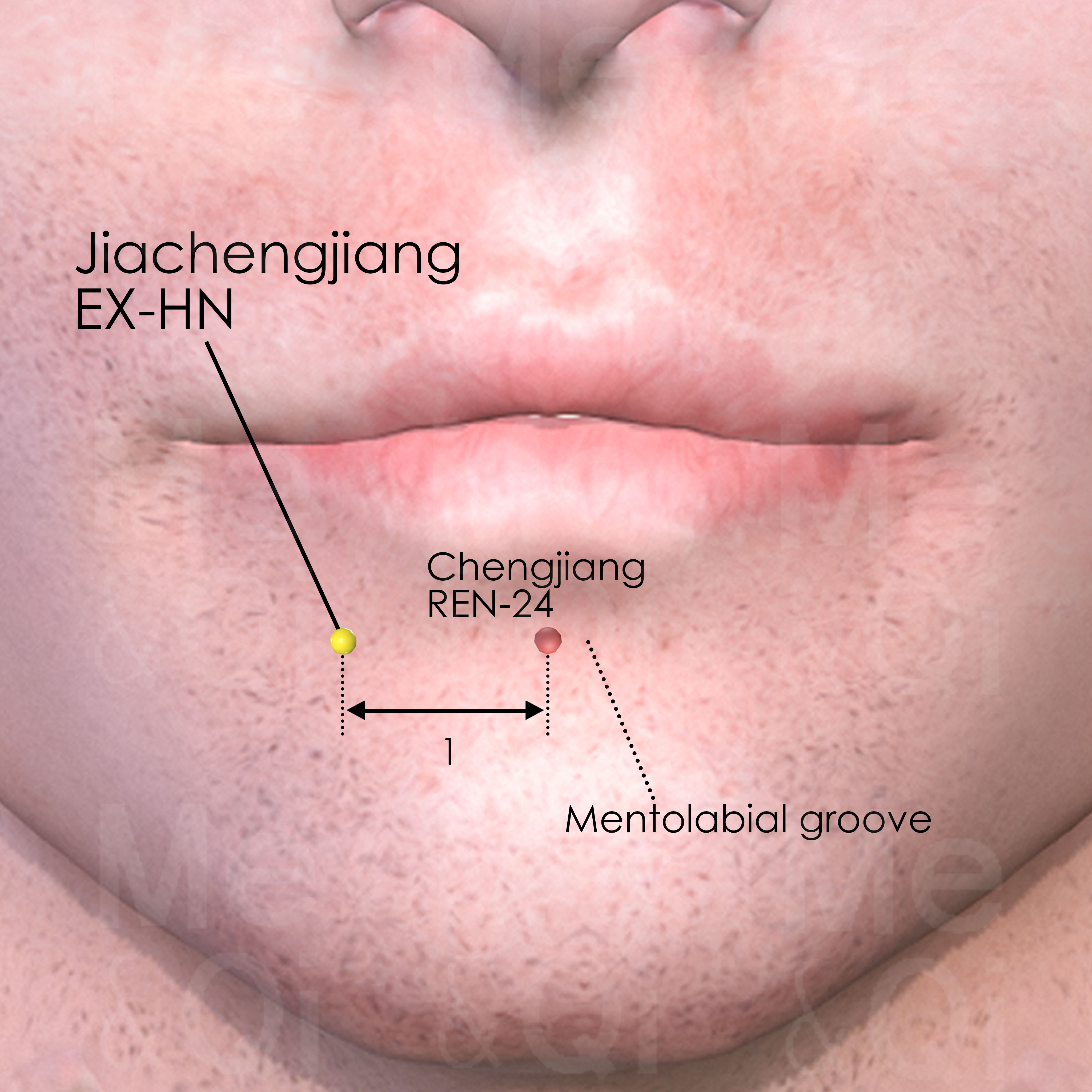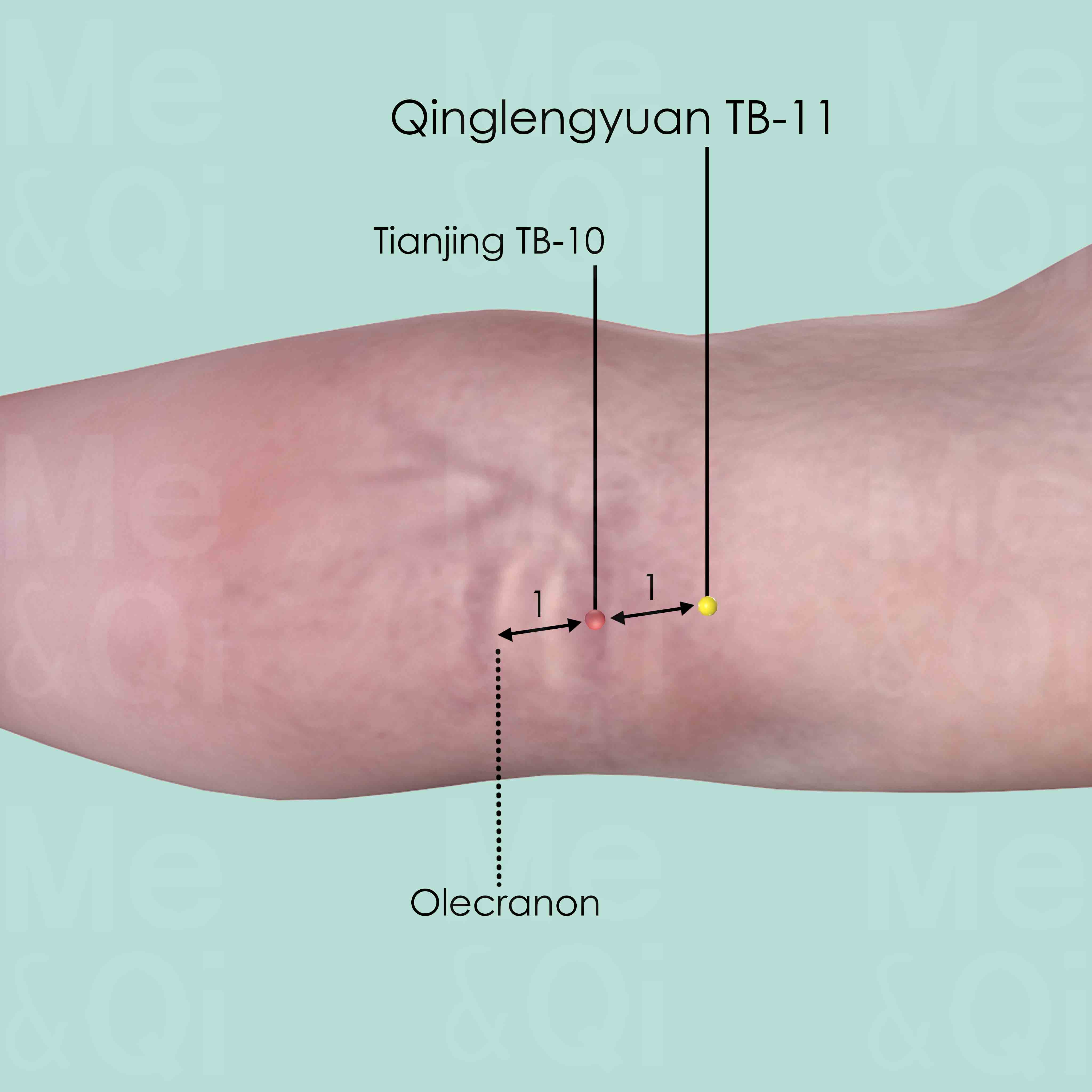Jaundiceaccording to TCM
Symptom family: Jaundice
Sub-symptom(s): Damp Heat Jaundice Newborn Jaundice Acute Jaundice
What is Jaundice?
Jaundice, also known as icterus, is a medical condition marked by a yellowish discoloration of the skin, mucous membranes, and the whites of the eyes. This symptom arises from elevated levels of bilirubin in the bloodstream, which can result from various underlying causes such as liver diseases, blockages of the bile duct, or hemolysis. Jaundice can manifest in different forms, including damp heat jaundice, newborn jaundice, and acute jaundice, each presenting unique challenges in diagnosis and treatment. The condition is not only a sign of compromised liver function but also a clue to broader systemic issues.
How does TCM view Jaundice?
Traditional Chinese Medicine (TCM) offers a distinctive perspective on jaundice, viewing it as an external manifestation of internal disharmony. Unlike the Western approach that largely focuses on physiological dysfunction, TCM interprets jaundice through patterns of disharmony such as Dampness, Heat, and Qi Stagnation.
This holistic framework underscores the importance of identifying the specific pattern affecting the individual to effectively address the root cause of jaundice. TCM's approach highlights the interconnectedness of the body's systems and the external environment, aiming to restore balance and health through personalized treatment plans.
Root Causes of Jaundice in TCM
In TCM, jaundice is primarily attributed to imbalances involving Dampness and Heat. Damp-Heat in the Liver is one such pattern, presenting symptoms like hypochondrial fullness, a feeling of warmth that eases with relief, a bitter or sticky taste in the mouth, lack of appetite, nausea, and a sensation of heaviness.
Another related condition is Dampness in the Gallbladder, characterized by a dull yellow complexion, yellowing of the eyes, pain and fullness in the hypochondriac region, nausea or vomiting, and fat malabsorption. These patterns reflect the accumulation and stagnation of dampness and heat within the body, disrupting the normal functioning of the liver and gallbladder and leading to jaundice.
Explore below more details about what might cause Jaundice according to TCM.
- By Syndrome
- By Organ
- Dampness
- Heat
- Liver
- Gallbladder
Dampness
"Dampness" in TCM is a concept that describes a pattern of disharmony where the body accumulates excess moisture. Imagine the heavy, sticky feeling you get on a very humid day; that's similar to what dampness feels like internally. It can manifest as a sense of heaviness, bloating, sluggishness, or even a foggy mind. This condition is often thought to arise from environmental factors like living in a damp place, dietary habits that promote moisture in the body, or internal imbalances that hinder the body's ability to process fluids properly. In TCM, dampness can obstruct the normal flow of energy and fluids in the body, leading to various symptoms.... see more
Dampness Patterns That Can Lead to Jaundice
Common Symptoms: Hypochondrial Fullness With Warmth Relief Sticky Taste In The Mouth Feeling Of Heaviness Abdominal Fullness Lower Abdominal Fullness Bitter Taste In The Mouth Lack Of Appetite Nausea
| Pattern Name | Relevant Symptoms | Relevant Formulas |
|---|---|---|
| Damp-Heat in the Liver | Jaundice, Hypochondrial fullness with warmth relief, Abdominal fullness, Lower abdominal fullness, Bitter taste in the mouth, Sticky taste in the mouth, Lack of appetite, Nausea, Feeling of heaviness, Yellow vaginal discharge, Vaginal itching, Vulvar eczema, Vulvar sores, Bleeding between periods, Midcycle bleeding pain, Red and swollen scrotum, Red and swelling genital, Papules, Itchy vesicular rashes, Urinary dysfunction, Urinary burning, Dark urine... see more | Long Dan Xie Gan Tang | Yin Chen Hao Tang |
| Dampness in the Gallbladder | Jaundice, Dull yellow complexion, Yellow eyes, Hypochondriac pain, Hypochondrial fullness with warmth relief, Nausea or vomiting, Fat malabsorption, Yellow sclera, Cloudy urine, Absence of thirst, Sticky taste in the mouth, Dull headache, Feeling of heaviness... see more | San Ren Tang |
Heat
In TCM "Heat" signifies an excess of Yang energy, leading to an imbalance where heat predominates over the body's cool Yin aspects. This condition is metaphorically akin to an internal over-heating. Symptoms indicative of Heat can include feelings of warmth, fever, sweating, irritability, red face, thirst with a preference for cold drinks, and a rapid pulse. The tongue may appear red with a yellow coating. Unlike the common interpretation of heat in terms of temperature, in TCM, it represents a state of hyperactivity or inflammation in the body.... see more
Heat Patterns That Can Lead to Jaundice
| Pattern Name | Relevant Symptoms | Relevant Formulas |
|---|---|---|
| Damp-Heat in the Liver | Jaundice, Hypochondrial fullness with warmth relief, Abdominal fullness, Lower abdominal fullness, Bitter taste in the mouth, Sticky taste in the mouth, Lack of appetite, Nausea, Feeling of heaviness, Yellow vaginal discharge, Vaginal itching, Vulvar eczema, Vulvar sores, Bleeding between periods, Midcycle bleeding pain, Red and swollen scrotum, Red and swelling genital, Papules, Itchy vesicular rashes, Urinary dysfunction, Urinary burning, Dark urine... see more | Long Dan Xie Gan Tang | Yin Chen Hao Tang |
Liver
In TCM the Liver is viewed as the organ responsible for the smooth flow of Qi, Blood, and emotions throughout the body. It plays a key role in regulating mood, storing blood, supporting digestion, and ensuring the health of tendons and eyes. When the Liver malfunctions or is imbalanced in TCM, it can lead to a range of issues such as irritability, mood swings, menstrual irregularities, eye problems, and muscular stiffness or pain. A malfunctioning Liver in TCM reflects not only physical disturbances but also emotional and mental disharmony, emphasizing the holistic approach of TCM in addressing health and wellness.... see more
Liver Patterns That Can Lead to Jaundice
| Pattern Name | Relevant Symptoms | Relevant Formulas |
|---|---|---|
| Damp-Heat in the Liver | Jaundice, Hypochondrial fullness with warmth relief, Abdominal fullness, Lower abdominal fullness, Bitter taste in the mouth, Sticky taste in the mouth, Lack of appetite, Nausea, Feeling of heaviness, Yellow vaginal discharge, Vaginal itching, Vulvar eczema, Vulvar sores, Bleeding between periods, Midcycle bleeding pain, Red and swollen scrotum, Red and swelling genital, Papules, Itchy vesicular rashes, Urinary dysfunction, Urinary burning, Dark urine... see more | Long Dan Xie Gan Tang | Yin Chen Hao Tang |
Gallbladder
In TCM the Gallbladder has a unique role in storing and excreting bile, but more importantly, it's seen as crucial for decision-making and courage. It's closely connected to the Liver, assisting in the smooth flow of Qi (vital energy) and supporting the Liver's role in maintaining emotional balance. When the Gallbladder malfunctions or is imbalanced in TCM, it can lead to physical symptoms like gallstones, jaundice, or a bitter taste in the mouth. There might also be digestive disturbances, particularly related to fat metabolism. On an emotional level, a Gallbladder disorder can manifest as indecisiveness, timidity, or a tendency to easily succumb to stress. These symptoms highlight the TCM view of the Gallbladder as integral to both physical processes and emotional resilience.... see more
Gallbladder Patterns That Can Lead to Jaundice
| Pattern Name | Relevant Symptoms | Relevant Formulas |
|---|---|---|
| Dampness in the Gallbladder | Jaundice, Dull yellow complexion, Yellow eyes, Hypochondriac pain, Hypochondrial fullness with warmth relief, Nausea or vomiting, Fat malabsorption, Yellow sclera, Cloudy urine, Absence of thirst, Sticky taste in the mouth, Dull headache, Feeling of heaviness... see more | San Ren Tang |
TCM Herbal Formulas for Jaundice
To combat jaundice, TCM utilizes an array of formulas and herbs tailored to address the underlying patterns of disharmony. For Damp-Heat in the Liver, the formula Long Dan Xie Gan Tang, featuring Chinese Gentian (Long Dan Cao), is commonly prescribed. This formula belongs to the category of Formulas that clear Heat from the Organs and is specifically designed to clear Heat and dry Dampness, targeting the Liver and Gallbladder.
Similarly, for issues stemming from Dampness in the Gallbladder, San Ren Tang is recommended. This formula falls under the Formulas that clear Heat and expel Dampness category, using Apricot Seeds (Xing Ren) among other herbs to relieve symptoms and restore balance.
Explore below some TCM herbal formulas used to address jaundice, organized by cause and by formula type.
- By Cause
- By Formula Type
- Dampness
- Heat
- Formulas that clear heat and expel dampness
- Formulas that clear heat from the organs
- Formulas that warm the middle and dispel cold
- Formulas that expel dampness
- Formulas that clear qi-level heat
Top Formula for Dampness:
Long Dan Xie Gan Tang
Suitable for Dampness patterns that may cause jaundice, such as Damp-Heat in the Liver
Learn moreAll Formulas Recommended for Jaundice Caused by Dampness
| Formula | Patterns Suitable For |
|---|---|
| Long Dan Xie Gan Tang | Damp-Heat in the Liver |
| Yin Chen Hao Tang | Damp-Heat in the Liver |
| San Ren Tang | Dampness in the Gallbladder |
Top Formula for Heat:
Long Dan Xie Gan Tang
Suitable for Heat patterns that may cause jaundice, such as Damp-Heat in the Liver
Learn moreAll Formulas Recommended for Jaundice Caused by Heat
| Formula | Patterns Suitable For |
|---|---|
| Long Dan Xie Gan Tang | Damp-Heat in the Liver |
| Yin Chen Hao Tang | Damp-Heat in the Liver |
Formulas that clear Heat and expel dampness
These formulas are suitable for some jaundice-causing patterns like Damp-Heat in the Liver.
One such formula is Yin Chen Hao Tang, with virgate wormwood as a key herb.
Other formulas of this category are listed in the table below.
All "formulas that clear heat and expel dampness" recommended for jaundice
| Formula | Patterns Suitable For (if applicable) |
|---|---|
| Yin Chen Hao Tang | Damp-Heat in the Liver |
| San Ren Tang | Dampness in the Gallbladder |
Formulas that clear Heat from the Organs
These formulas are suitable for some jaundice-causing patterns like Damp-Heat in the Liver.
One such formula is Long Dan Xie Gan Tang, with chinese gentian as a key herb.
Formulas that warm the middle and dispel Cold
Jaundice can be treated by these formulas when it is due to cold in the middle jiao (digestive region), necessitating warming and cold-dispelling actions.
One such formula is Huang Qi Jian Zhong Tang, with milkvetch root as a key herb.
Formulas that expel Dampness
Jaundice can be treated by these formulas in cases where dampness obstructs the body's normal functions, necessitating herbs that specifically target and expel dampness.
One such formula is Wei Ling Tang, with water plantain as a key herb.
Formulas that clear Qi-level Heat
Jaundice can be treated by these formulas when it results from an intense heat condition at the qi level, affecting the body's energy flow.
One such formula is Zhi Zi Chi Tang, with cape jasmine fruit as a key herb.
Acupoints for Jaundice
TCM also incorporates acupuncture as a key component of jaundice treatment, focusing on specific acupoints to regulate Qi, resolve Dampness, and clear Heat. Points along the Bladder Channel, such as Danshu BL-19 and Ganshu BL-18, are targeted to address Damp-Heat in the Liver and Gallbladder, supporting liver function and easing digestive symptoms.
Additional acupoints like Jizhong DU-6 on the Governing Vessel and Riyue GB-24 on the Gall Bladder Channel are utilized for their effectiveness in strengthening the Spleen, expelling Dampness, and alleviating Qi Stagnation. This integrative approach, combining herbal medicine with acupuncture, exemplifies TCM's holistic strategy in treating jaundice, aiming to harmonize the body's internal environment and promote natural healing.
Explore below some acupoints used to address jaundice, organized by meridian.
- By Meridian
- Bladder Channel
- Governing Vessel
- Extra Points: Head and Neck (EX-HN)
- Triple Burner Channel
- Gall Bladder Channel
- Spleen Channel
- Liver Channel
- Small Intestine Channel
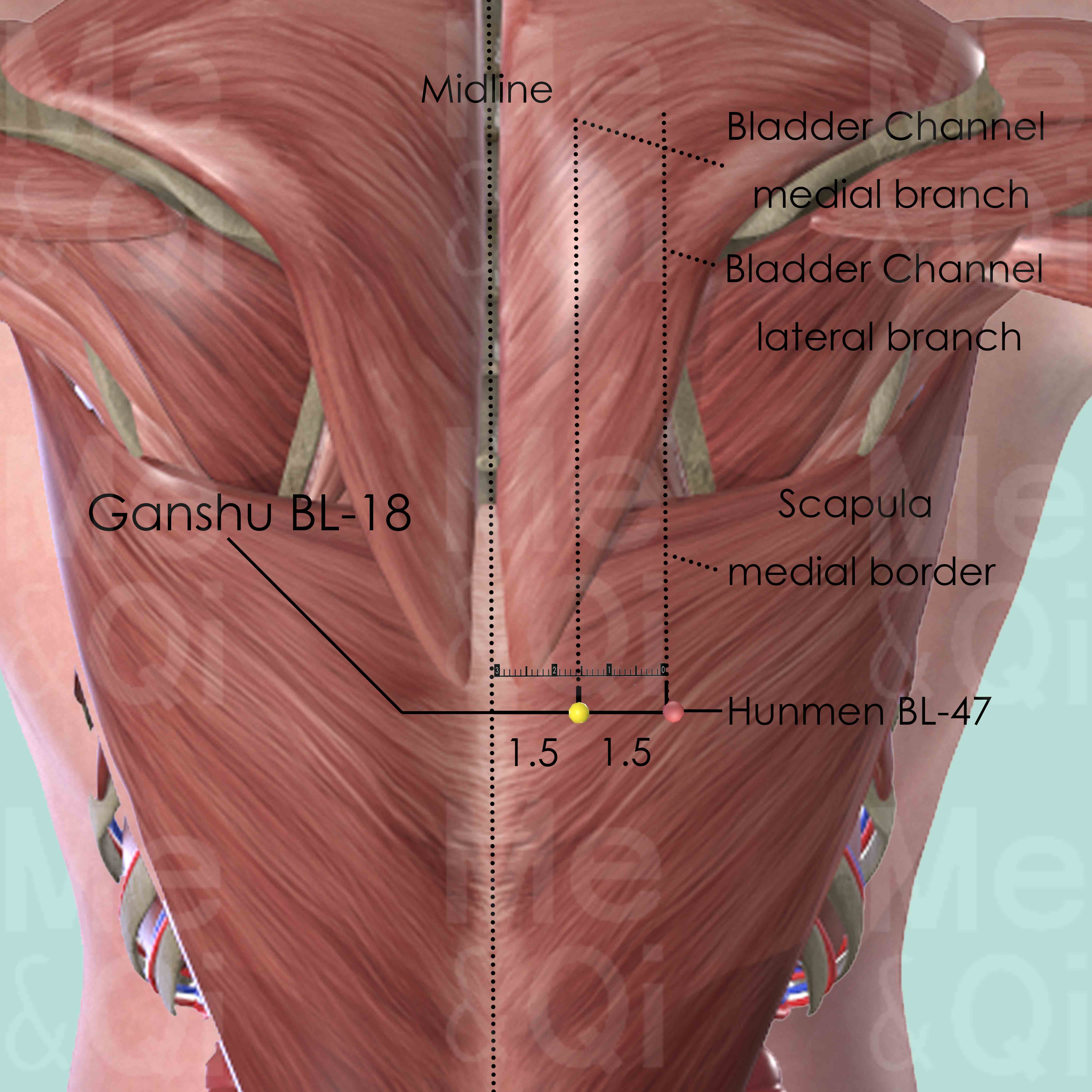
Ganshu BL-18
1.5 cun lateral to the lower border of the spinous process of the 9th thoracic vertebra (T9).
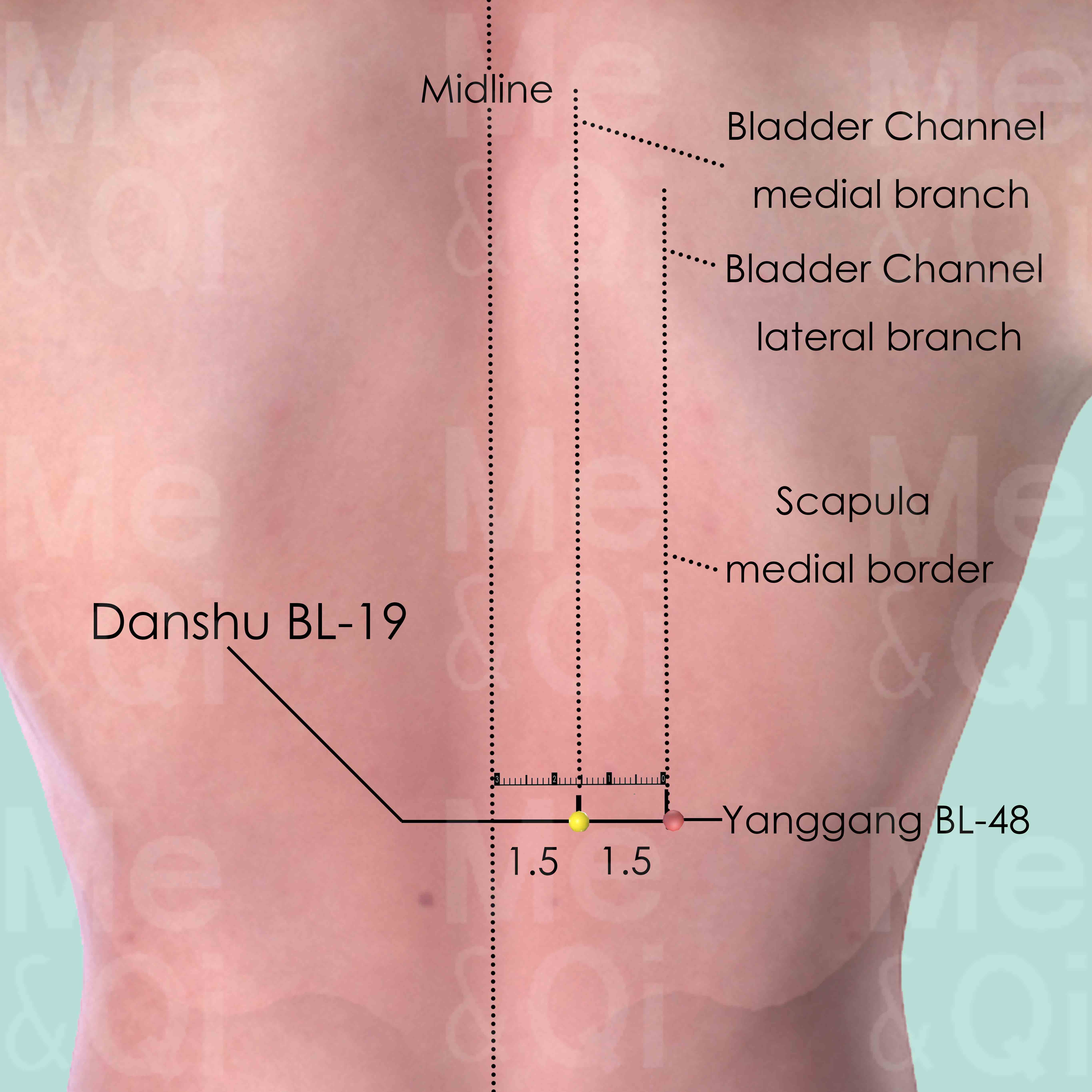
Danshu BL-19
1.5 cun lateral to the lower border of the spinous process of the 10th thoracic vertebra (T10).
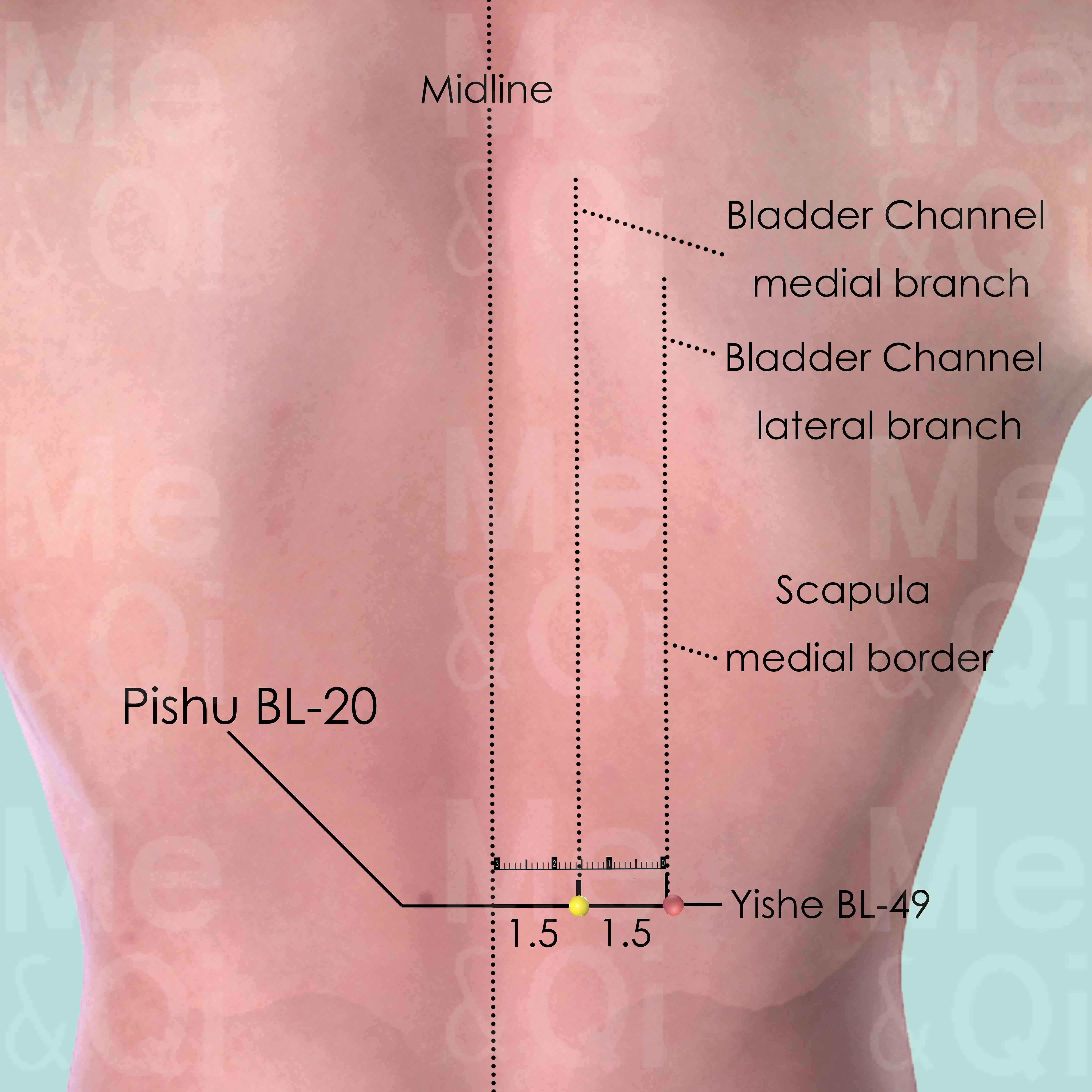
Pishu BL-20
1.5 cun lateral to the lower border of the spinous process of the 11th thoracic vertebra (T11).
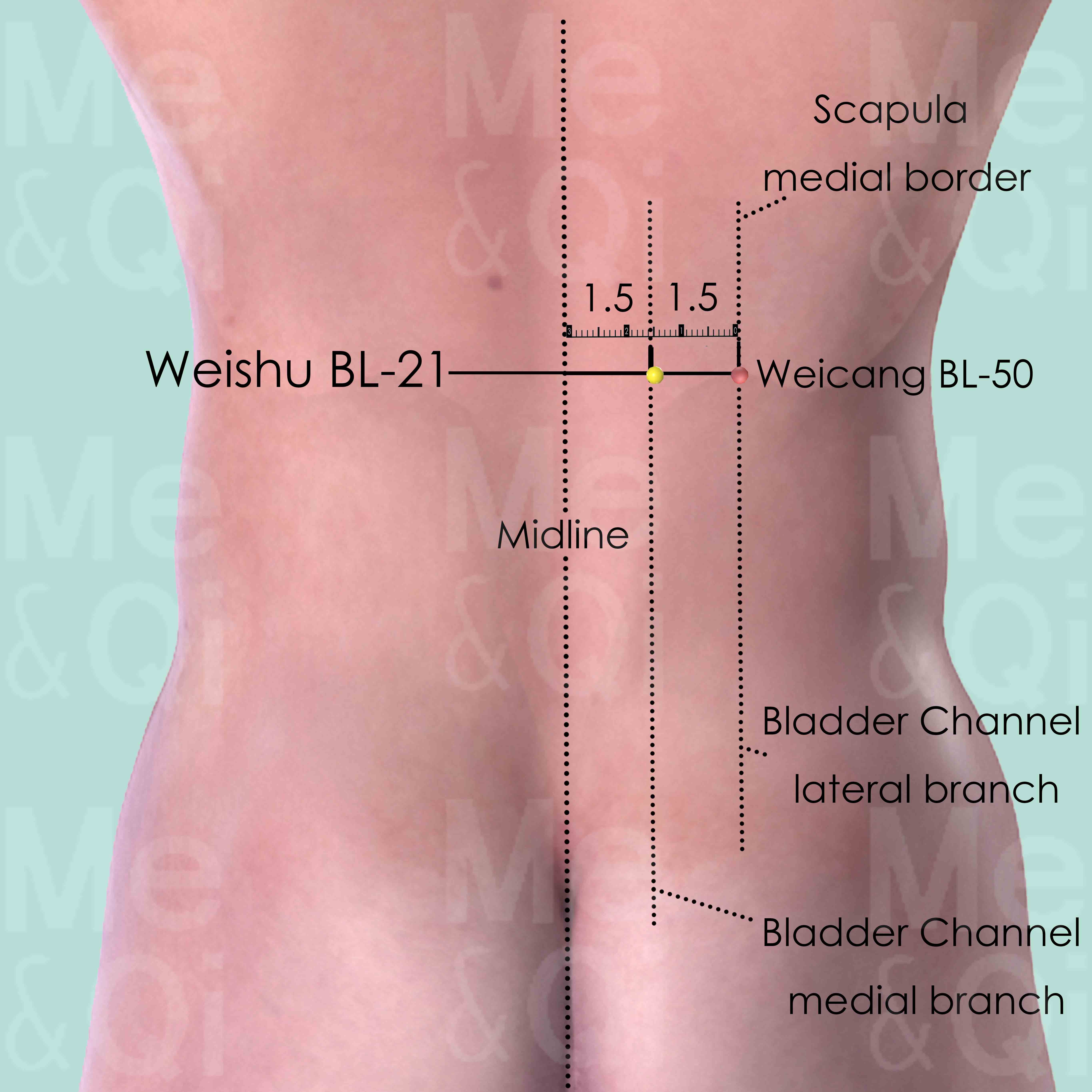
Weishu BL-21
1.5 cun lateral to the lower border of the spinous process of the 12th thoracic vertebra (T12).
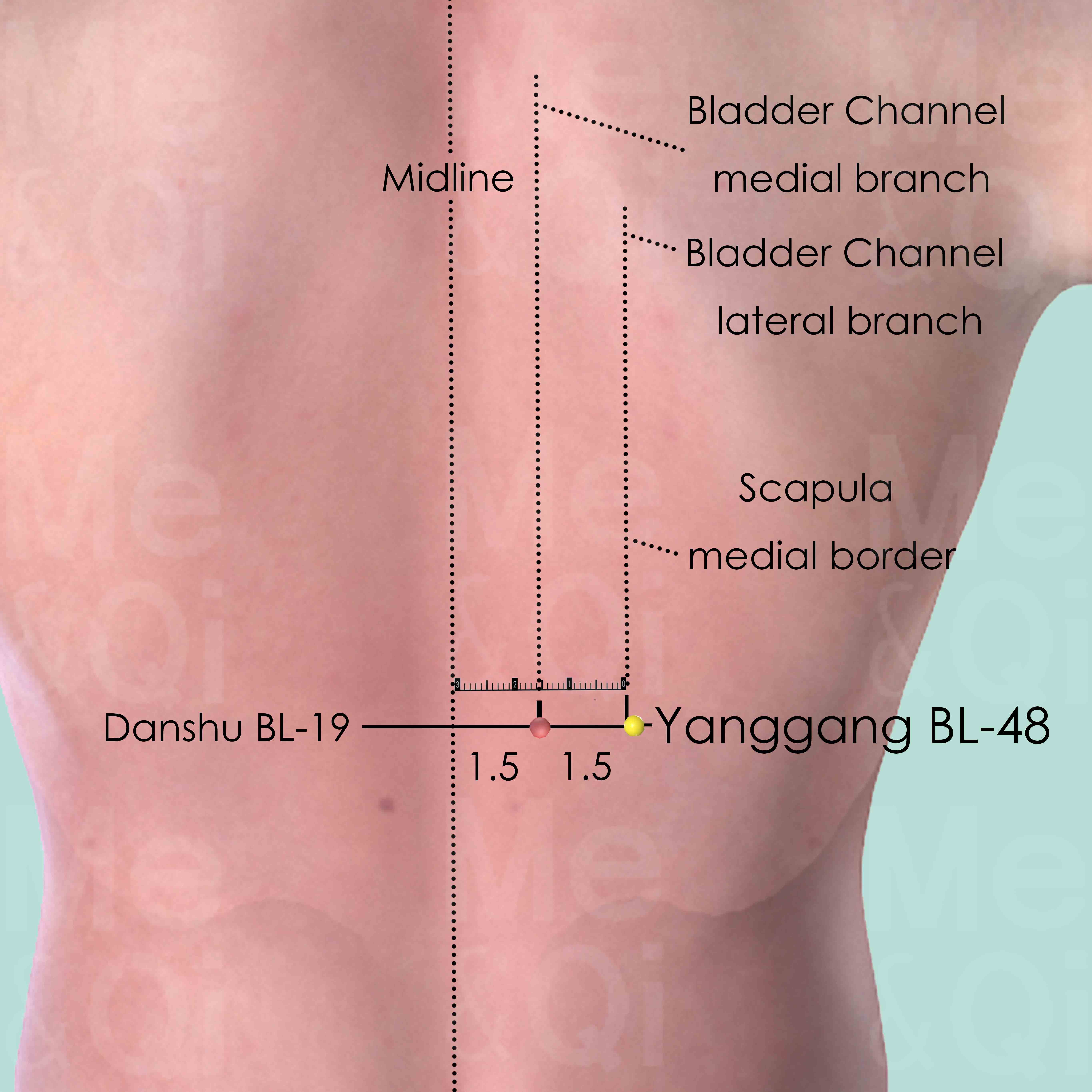
Yanggang BL-48
3 cun lateral to the lower border of the spinous process of the 10th thoracic vertebra (T10).
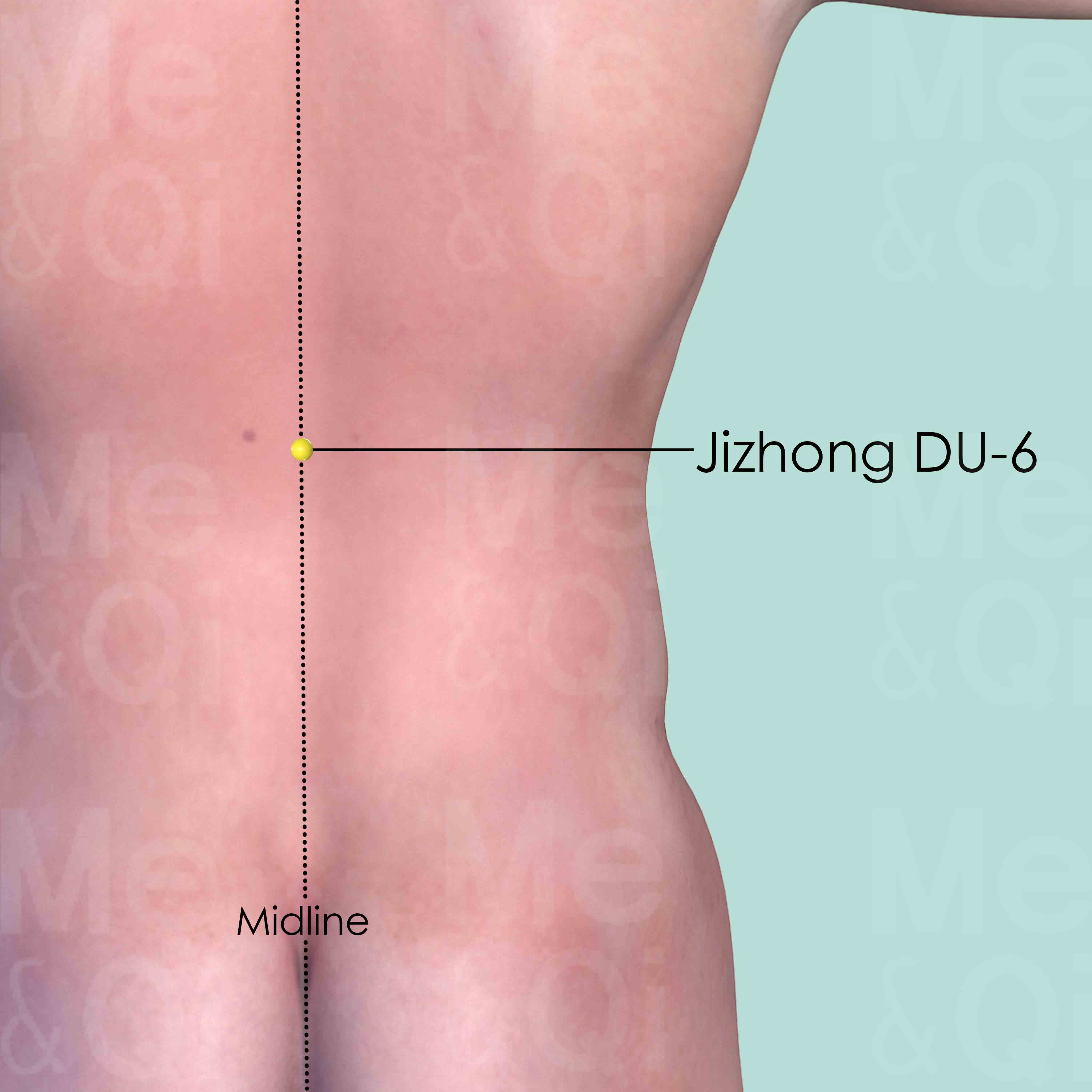
Jizhong DU-6
On the back midline, in the depression below the spinous process of the 11th thoracic vertebra (T11).
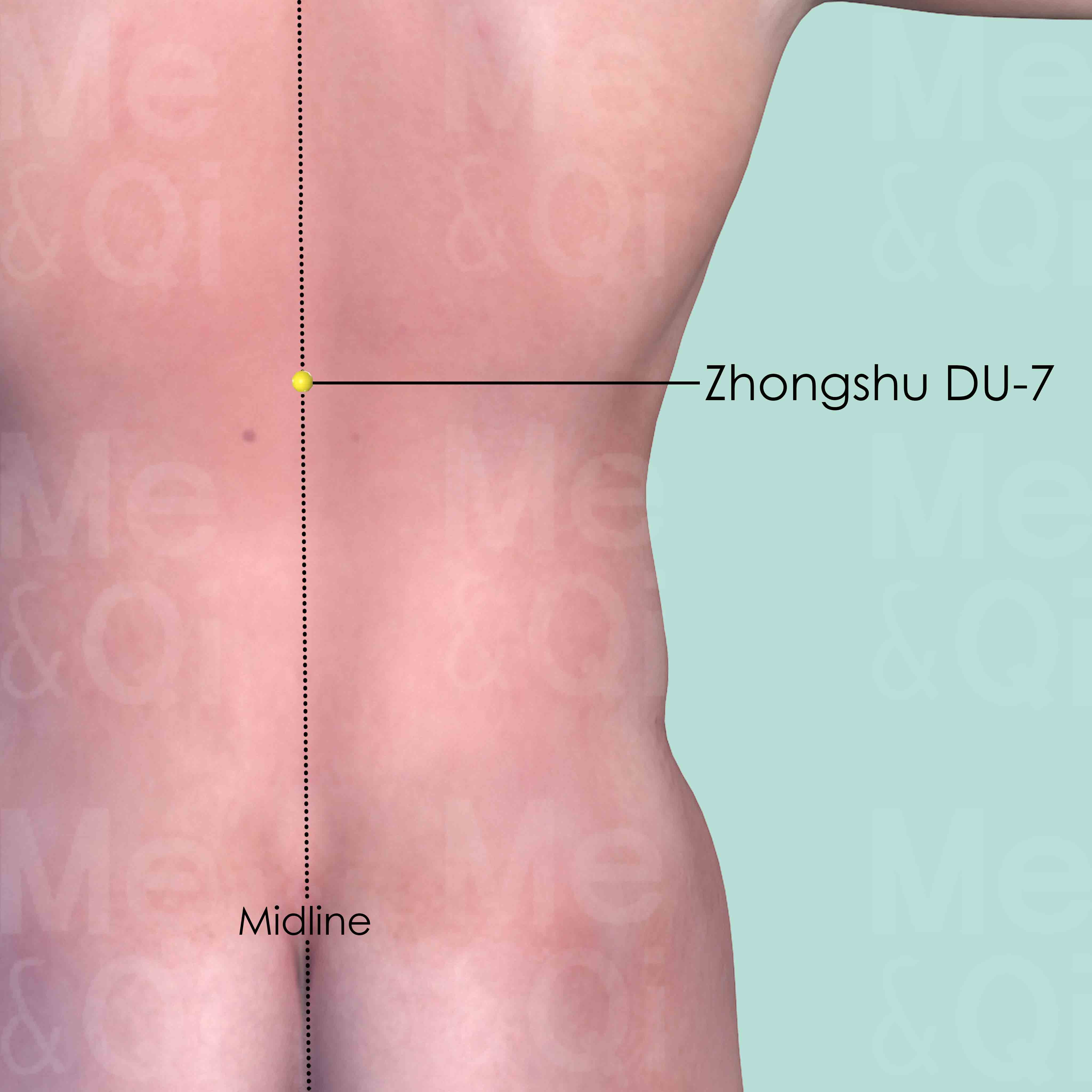
Zhongshu DU-7
On the back midline, in the depression below the spinous process of the 10th thoracic vertebra (T10).
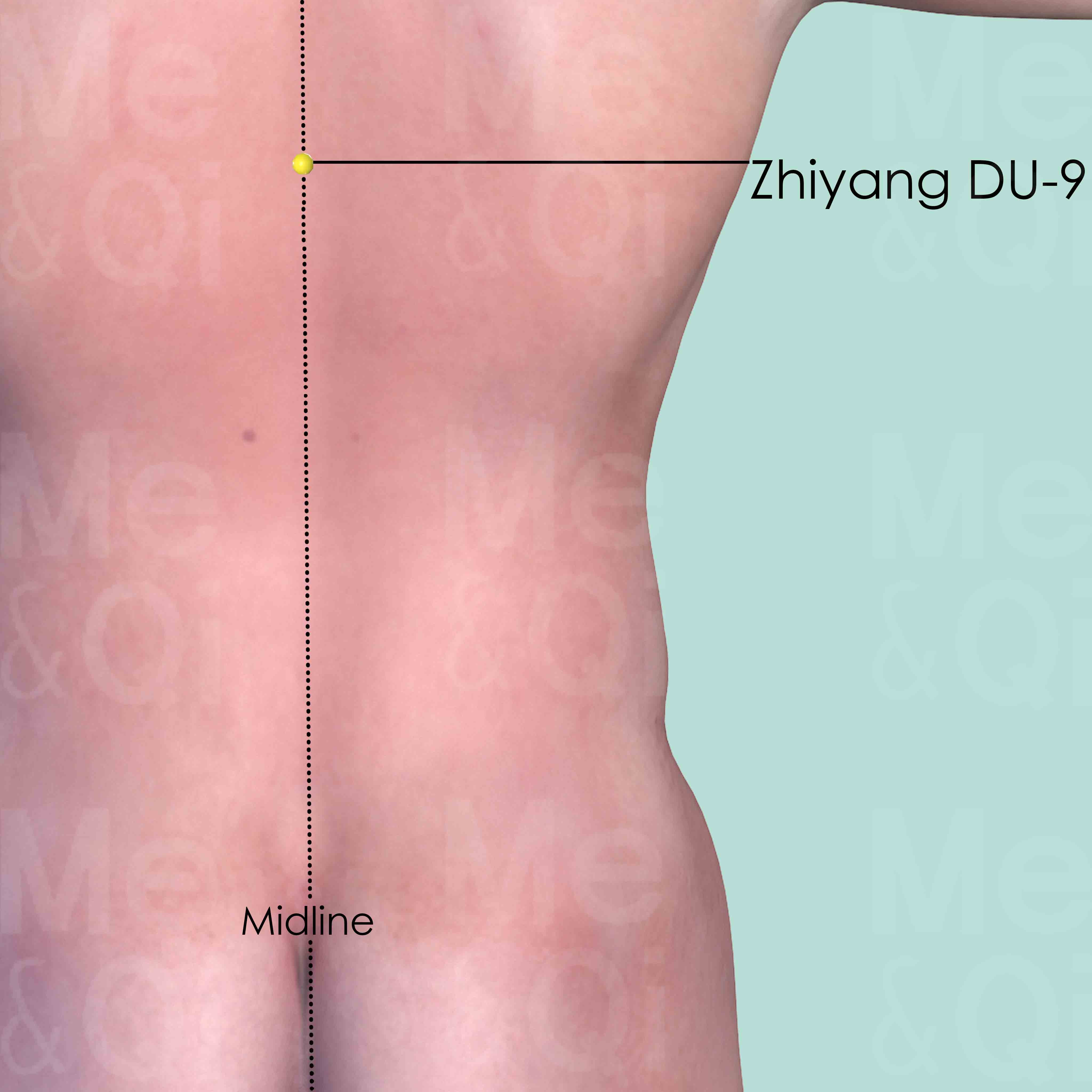
Zhiyang DU-9
On the back midline, in the depression below the spinous process of the 7th thoracic vertebra (T7).
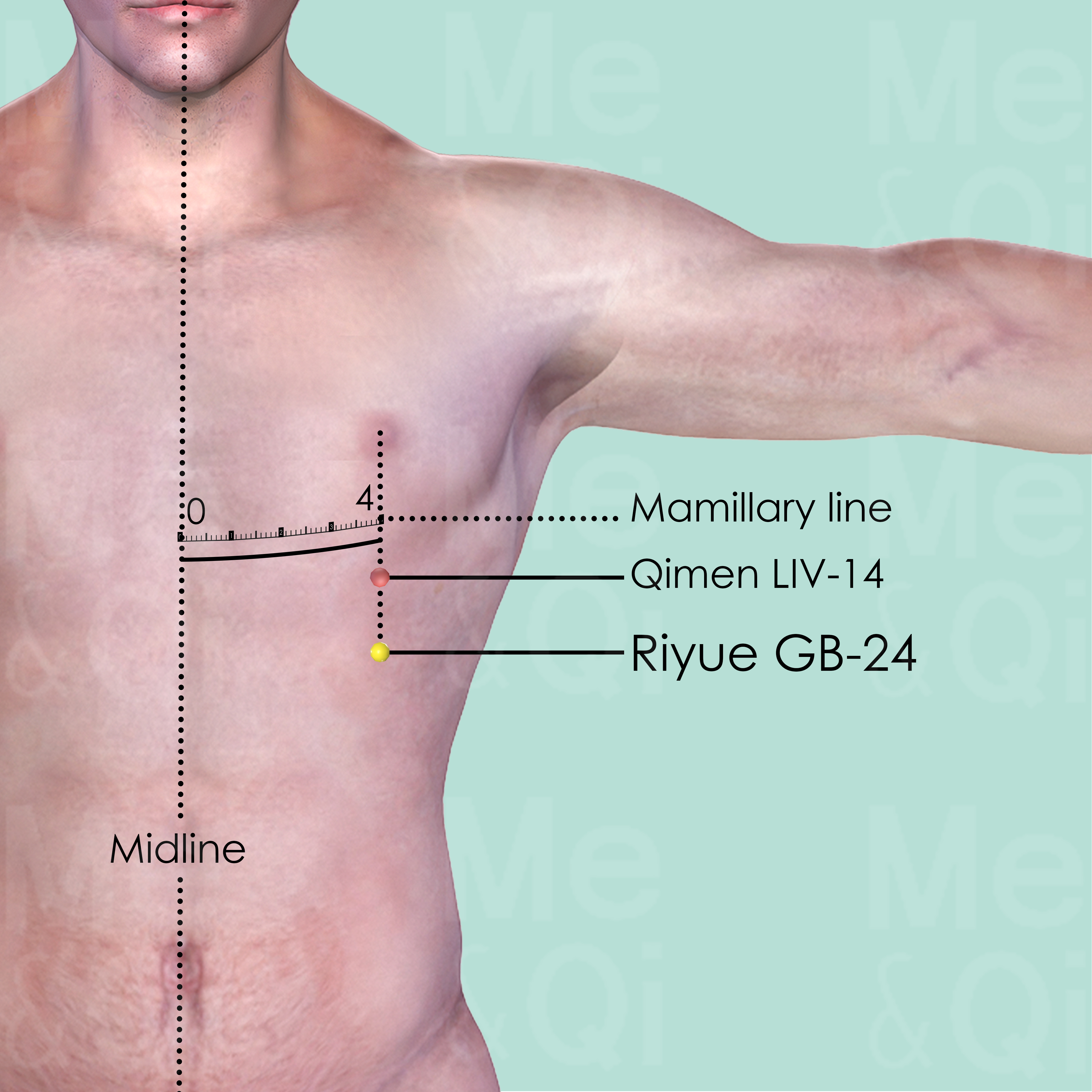
Riyue GB-24
On the mamillary line which is 4 cun lateral to the anterior midline, in the 7th intercostal space, 1 intercostal space below Qimen LIV-14.
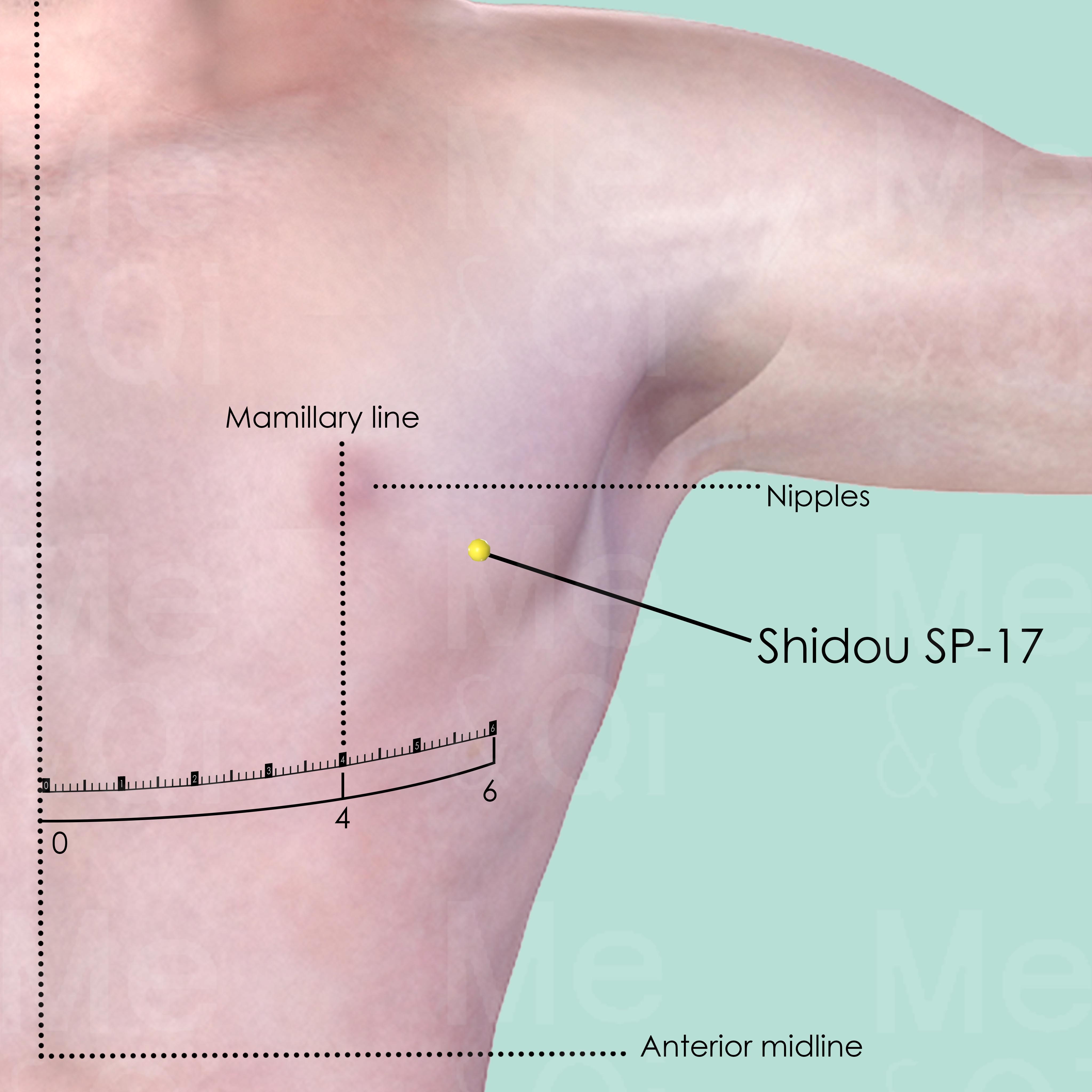
Shidou SP-17
6 cun lateral to the anterior midline, 2 cun lateral to the mamillary line, in the 5th intercostal space.
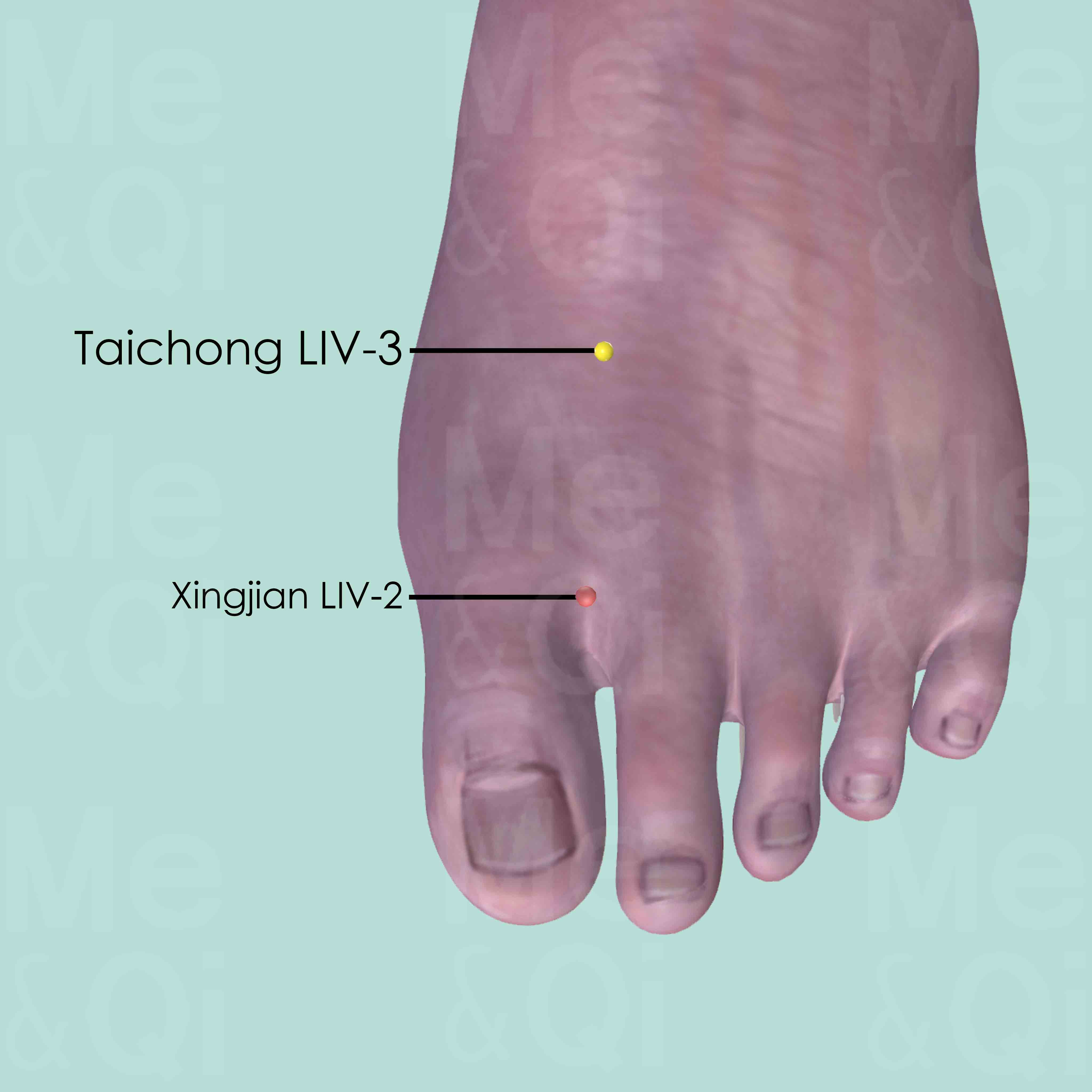
Taichong LIV-3
On the dorsum of the foot, between the 1st and 2nd metatarsal bones, in the depression proximal to the metatarsophalangeal joints and the proximal angle between the two bones.
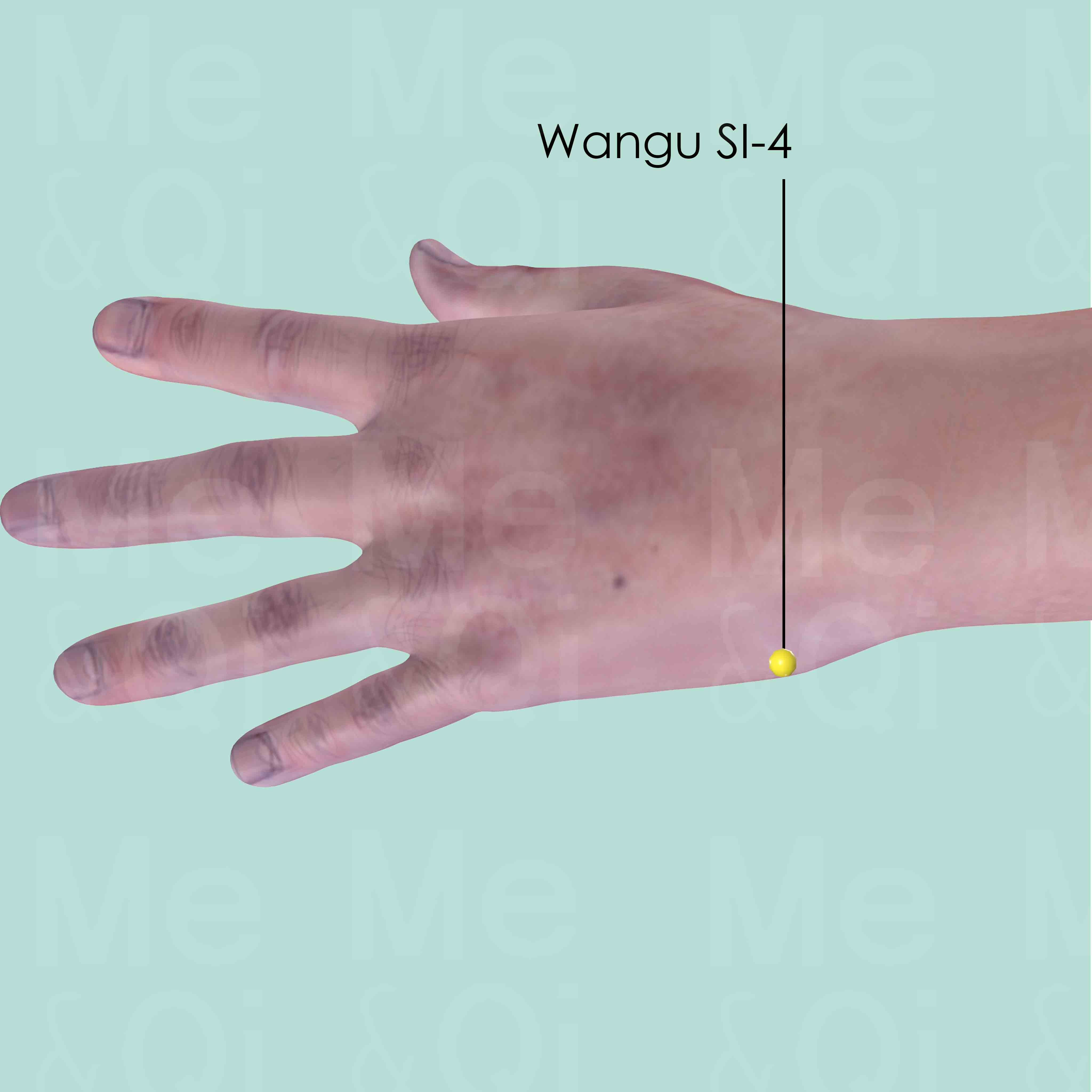
Wangu SI-4
On the ulnar side of the palm, in the depression between the base of the 5th metacarpal bone and the carpal bone.

